An athlete’s aerobic capacity can be evaluated and improved upon via the implementation of maximal aerobic speed (MAS) training. MAS is a measurement of an athletes running velocity at the point their VO2 max was reached (vV02 max), or their maximal oxygen intake. More precisely, an athletes MAS is the lowest running velocity at which maximum oxygen intake occurred, as the athlete may be able to continue to run faster beyond this point before reaching their anaerobic threshold (Berthoin et al, 1992). An athletes MAS score can be quantified by having an athlete complete a MAS test, providing coaches with a 100% MAS score that is specific to that individual athlete. Once an athlete’s 100% MAS has been established, intervals can be programmed that are pre-set to a percentage of an athletes vVO2max or MAS. This includes sub-maximal (e.g. 80% MAS), maximal (100% MAS) and supra-maximal (120% MAS) maximal aerobic speed based intervals, which when periodised correctly, may lead to an improvement within an athlete’s aerobic capacity.
MAS Testing
An athletes MAS can be established in many ways, including incremental shuttle based running tests (e.g. Yo Yo IR1, Multistage shuttle test, Montreal Beep test, etc.) and linear continuous running tests set to a specific set distance (e.g. 1200m, 1500m, 2000m, etc.) or a specific time trial (e.g. 5-min, 6-min, 7-min, etc.). When implementing a shuttle based test, the demands of repeatedly decelerating, changing direction and re-accelerating places a greater demand on the aerobic bioenergetic system. The repeated recovery requirements between each intermittent high intensity effort places significant demands on the phosphocreatine system and therefore, an athlete’s ability to resynthesise phosphocreatine stores. A muscles oxidative capacity plays a key role within phosphocreatine resynthesis, as the process of replenishing muscle phosphocreatine stores is heavily oxygen dependent.
When implementing a shuttle based MAS test, the athletes MAS is established by recording the final running speed achieved within the last running shuttle before the athlete ceases to continue with the test. The final running speed established when using shuttle based tests will be recorded in km/hr, and will therefore need to be converted to m/s to allow MAS training distances to be easily calculated (Baker & Heaney). Therefore, when implementing shuttle based MAS testing coaches need to be aware that an athletes MAS score will most likely be lower when compared to a linear based MAS test result. This inaccuracy requires the athletes shuttle based MAS score to be corrected using the following equation (Berthoin et al, 1992):
(MAS=1.34*MSST final speed – 2.86)
Berthon et al (1997) previously demonstrated a significant relationship between an athletes MAS established via a 5 minute time trial and MAS established via an incremental treadmill test to exhaustion within a lab. Research by Chamoux et al (1996) previously demonstrated that a 5 minute time trial was the most suitable running duration when establishing an athletes MAS score. These findings demonstrate the validity of implementing a 5 minute continuous running time trial to establish an athletes MAS within intermittent high intensity based sports. When implementing a time trial or set distance MAS test, the athletes actual MAS score is simply calculated by dividing the distance covered (in metres) by the time taken to complete the test (in seconds).
MAS Training
The desired MAS percentages can then be calculated from the athletes MAS score and implemented within a program based on the desired intensity of that particular session (e.g. sub-maximal session at 80% MAS, maximal session at 100% MAS, supra-maximal session at 120% MAS). The percentage of the athletes MAS is then multiplied by the duration of the programmed interval (e.g. 15 seconds running at 100% MAS) before being marked out as the required distance to be covered per 15 second effort (e.g. 100% MAS = 4.2 m/s = 63m per 15 second run). This would then be repeated for a set number of efforts (e.g. 15 s work : 15 s rest @ 100% MAS x 8) with either an active recovery (for lower intensity MAS training) or complete rest (for higher intensity MAS training) between each interval. This block of work would then be repeated for a set number of sets.
Dupont et al (2004) previously reported significant improvements in aerobic capacity and 40m sprint performance post 120% MAS training intervention in soccer players. These findings demonstrate the simultaneous aerobic and anaerobic benefits of supra maximal MAS training in team sport athletes and other sports that demand both aerobic and anaerobic capacity. It is clear that MAS training offers coaches with an effective means of evaluating and improving an athlete’s aerobic capacity, which in turn will benefit aerobic performance within intermittent sports, therefore providing practitioners with effective form of metabolic conditioning that can be included within the overall performance program. To easily calculate and set programs based on your MAS score, please visit the ‘MAS Calculator’ within the resources section.
Baker, D. Heaney, N. Some Normative Data for Maximal Aerobic Speed for Field Sport Athletes: A Brief Review. Journal of Australian Strength & Conditioning (in review).
Berthoin, S. Gerbeaux, M. Geurruin, F. Lensel-Corbeil, G. Vandendorpe, F. (1992). Estimation of maximal aerobic speed. Science & Sport 7(2), 85-91.
Berthon, P. Fellmann, N. Bedu, M. Beaune, B. Dabonneville, M. Coudert , J. Chamoux, A. (1997). A 5-min running field test as a measurement of maximal aerobic velocity. European journal of Applied Physiology. 75, pp: 233–238.
Chamoux, A Berthon, P. Laubignat, J, F. (1996). Determination of maximum aerobic velocity by a 5-minute test with reference to world running records. A theoretical approach. Archives of Physiology and Biochemistry. 104, pp: 207–211.
Dupont, G. Akakpo, K. Berthoin, S. (2004). The effects of In-season, high intensity interval training in
soccer players. Journal of Strength and Conditioning Research. 18(3), pp: 584-589.


